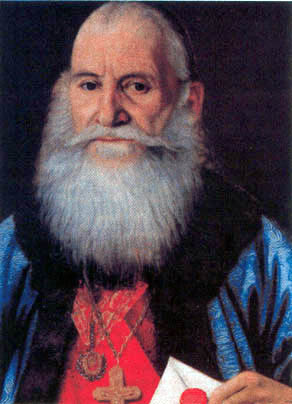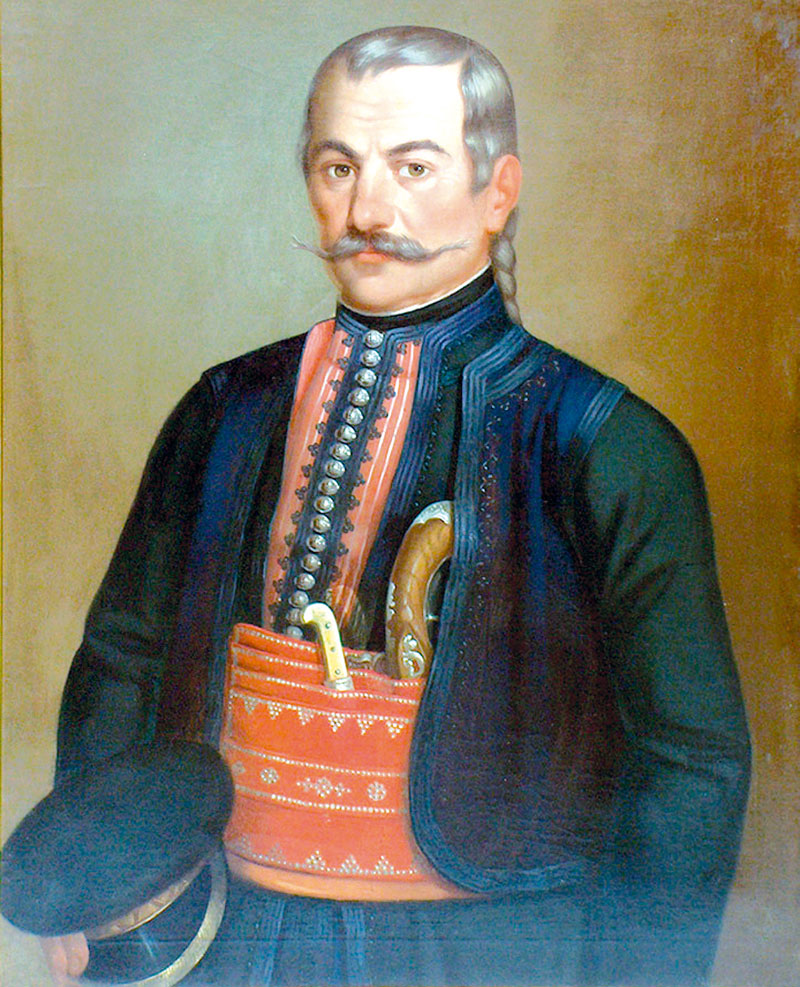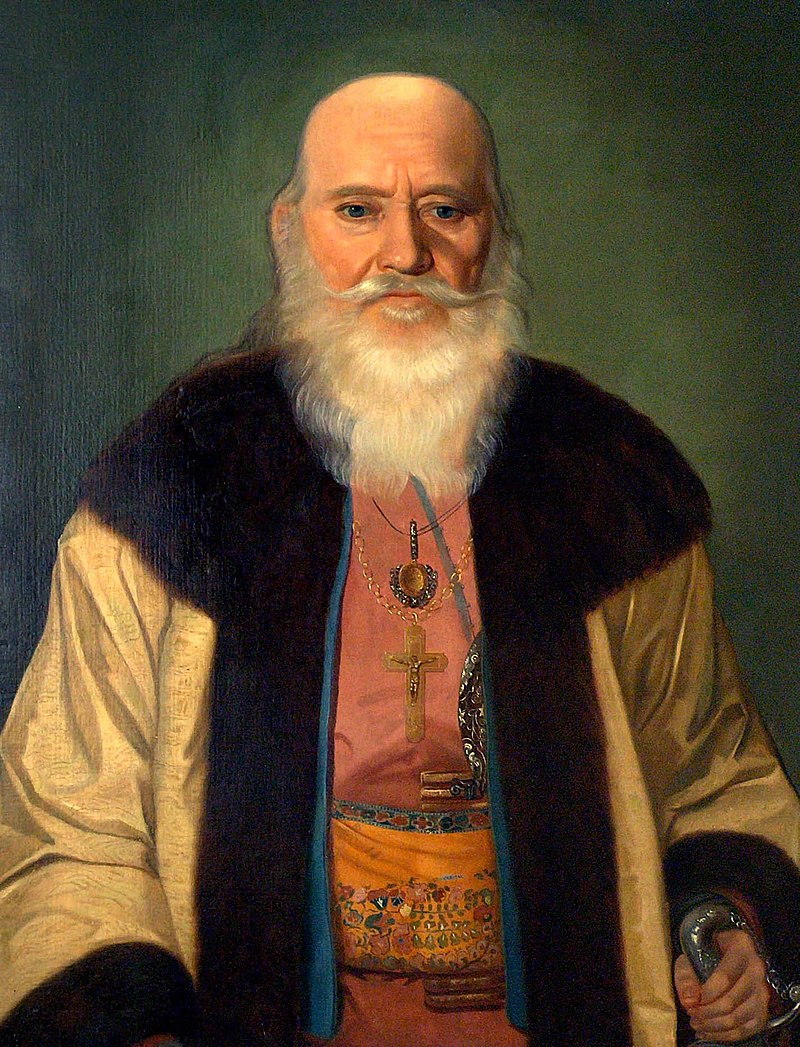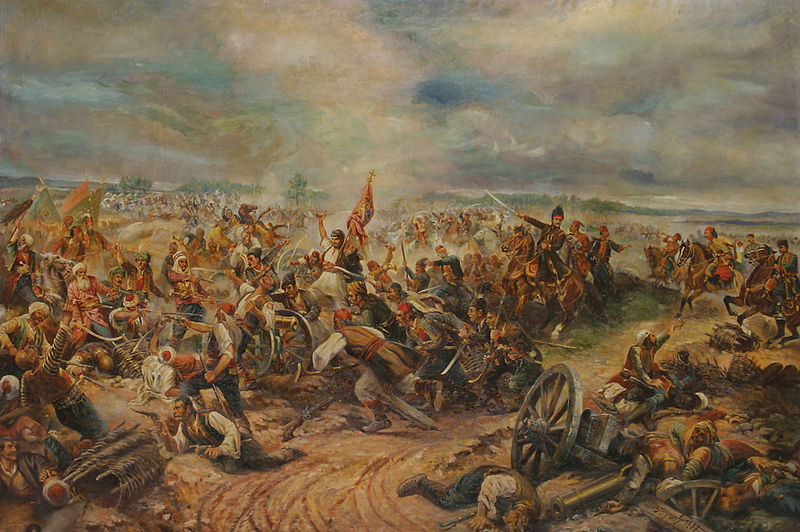OUR BLOG
PROTA MATEJA NENADOVIC
SERBIAN DIPLOMATS
 Born in Brankovina on February 26, 1777, Mateja Nenadović was one of the few literate people in Serbia at that time. He became a priest in 1793, and he was awarded the honorary rank of Proteus, ie the first priest, by the Orthodox Church two years later, when he received his own parish. However, the decision on the revolt against the dahis, made by the agreement of 12 princes of the Valjevo nahija, among whom was Mateja’s father, Prince Aleksa Nenadović, will change his life.
Born in Brankovina on February 26, 1777, Mateja Nenadović was one of the few literate people in Serbia at that time. He became a priest in 1793, and he was awarded the honorary rank of Proteus, ie the first priest, by the Orthodox Church two years later, when he received his own parish. However, the decision on the revolt against the dahis, made by the agreement of 12 princes of the Valjevo nahija, among whom was Mateja’s father, Prince Aleksa Nenadović, will change his life.

Aleksa Nenadović, prince of the Tamnava-Posavina principality
His father instructed him in the preparation of the uprising, but when the knowledge of the uprising came into the hands of the Dahis, in 1804, the Slaughter of Princes was carried out, among whom was Nenadović’s father. Because of that, Father Mateja soon left the house, was among the first to join the insurgents, and with his uncle Jakov, he became one of the initiators of the First Serbian Uprising.
He took part in the fighting, but following his father’s example, he gained experience in negotiation and diplomatic activities early on, and as such he was considered a wise negotiator with both the Turks, the most important rulers of the time.
SERBIAN GOVERNING COUNCIL
In order to prevent the eventual collapse of the uprising, on August 15, 1805, one of the central authorities in insurgent Serbia was formed, the Serbian Governing Council, whose co-founder was Proto Mateja, who was its first governor in the period from 1805 to 1807.
 He stood out especially in the battle of Misara, so he was appointed commander of the western insurgent army, and in 1811 he was the duke of Valjevo, when there were 34 villages and two towns under his rule: Palež and Ub. He also participated together with Milos Obrenovic and Stojan Cupic in the battle on Ravna, when the Serbs offered the last resistance to the Turks in the west and among the last ones he took refuge in Srem in the fall of 1813.
He stood out especially in the battle of Misara, so he was appointed commander of the western insurgent army, and in 1811 he was the duke of Valjevo, when there were 34 villages and two towns under his rule: Palež and Ub. He also participated together with Milos Obrenovic and Stojan Cupic in the battle on Ravna, when the Serbs offered the last resistance to the Turks in the west and among the last ones he took refuge in Srem in the fall of 1813.
THE FIGHT FOR LIBERATION
He spent the period until the Second Serbian Uprising in Austria-Hungary, engaging in diplomatic activities and trying to attract great powers to help Serbia in the fight against the Turks. He presented the problems at the Congress of Rulers of Great European States, negotiated with the Russian Tsar in Vienna, managed the return of refugees from Austria to Serbia and provided the necessary weapons and ammunition.  After the outbreak of the Second Serbian Uprising in 1815, he tried to show foreign forces a new movement, as the work of the final protest of the unfortunate people, and then moved to Serbia again to help Prince Milos, just as he helped Karadjordje. At the beginning, he got along well with the prince, he got many important and confidential jobs, but on several occasions he fell into disfavor with Milos, and then he was again called to return to duty. In liberated Serbia, he was the prince of Valjevo Nahija and sat in the People’s Office in Belgrade. One of his last jobs was in the Valjevo court, where he resigned, after which he retired, receiving a pension, with exemption from paying taxes.
After the outbreak of the Second Serbian Uprising in 1815, he tried to show foreign forces a new movement, as the work of the final protest of the unfortunate people, and then moved to Serbia again to help Prince Milos, just as he helped Karadjordje. At the beginning, he got along well with the prince, he got many important and confidential jobs, but on several occasions he fell into disfavor with Milos, and then he was again called to return to duty. In liberated Serbia, he was the prince of Valjevo Nahija and sat in the People’s Office in Belgrade. One of his last jobs was in the Valjevo court, where he resigned, after which he retired, receiving a pension, with exemption from paying taxes.
YEARS OF RETREAT AND EXILE
For several years he lived in seclusion in Brankovina, teaching his children and writing memoirs. During that period, he built a school and a new church in his hometown. As a pensioner, he approached the opposition against the prince more openly, demanding that his personal arbitrariness be limited. When the State Council was founded in 1838, he became one of the prominent defenders of the constitution and a supporter of Russophile politics. However, he was soon expelled from Serbia and forced to seek protection in Constantinople. Dissatisfied, he returned to Serbia and after the overthrow of the Obrenovic dynasty, in 1842, he became a state councilor again. History records that at that time he did a great service to Prince Aleksandar Karadjordjevic by suffocating with his people the Katan rebellion organized for his overthrow from power and the return of Obrenovic to the throne. He retired from political life in 1852, when he asked for a pension and went to Valjevo. He passed away two years later and was ceremoniously buried in Brankovina, in the family tomb. A small Gospel was placed on his chest, which he received as a gift in Russia, which was sworn in by members of the first Serbian Council. Many painters painted the authentic figure of Proteus Matthias. A monument to him was erected in Valjevo, and many streets in various cities in Serbia today bear his name, as does the elementary school in his native Brankovina.
He retired from political life in 1852, when he asked for a pension and went to Valjevo. He passed away two years later and was ceremoniously buried in Brankovina, in the family tomb. A small Gospel was placed on his chest, which he received as a gift in Russia, which was sworn in by members of the first Serbian Council. Many painters painted the authentic figure of Proteus Matthias. A monument to him was erected in Valjevo, and many streets in various cities in Serbia today bear his name, as does the elementary school in his native Brankovina.
MEMOIRS
During his life, Father Matija Nenadovićc wrote “Memoirs” in order to leave a written trace of important personalities and events of his time to his descendants. Literary historians and critics have rated “Memoirs” as the most important Serbian prose of the first half of the 19th century and a valuable historical document.
QUOTES
“We found a peasant, and he made two benches out of linden trees.” set up in one room; we spread one head scarf on the table, put the holy gospel and the monastery cross on it and made sessions about it. ” – Father Matija Nenadović, about the first session of the Governing Council, held in the monastery of Voljavča. “It is, children, the eternal variability of destiny that I knew early on and that I never complained about; learn from that variability: that one should not be proud in happiness, nor despair in unhappiness. “







 2018
2018